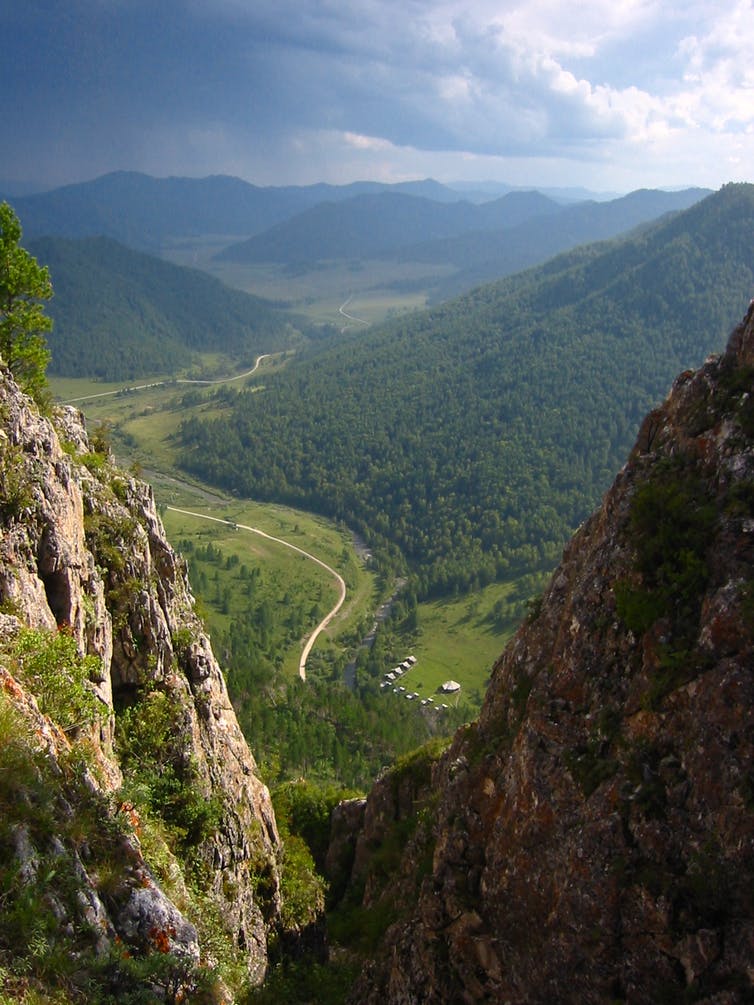
A groundbreaking DNA study published in Nature has revealed a remarkable discovery: the remains of a young girl whose parents belonged to two different ancient human species. She was the first known person with a Neanderthal mother and a Denisovan father—a true hybrid of two early human groups that coexisted thousands of years ago.

Who Were the Neanderthals and Denisovans?
Neanderthals (Homo neanderthalensis) were a species of archaic humans who lived across Europe and Western Asia until their extinction around 30,000 years ago. Known for their robust builds, strong hunting skills, and tool-making abilities, they adapted to various environments, including harsh Ice Age conditions.
Denisovans (Homo sapiens denisova) remain much more mysterious. Their remains, mostly tiny bone fragments, have only been discovered in Denisova Cave, Siberia. Scientists still don’t know what they looked like or the full extent of their capabilities.
Both species, along with modern humans, shared a common ancestor over 400,000 years ago.
Meet Denisova 11: The First-Generation Hybrid
Scientists unearthed a tiny bone fragment in Denisova Cave, Siberia, which turned out to belong to a teenage girl, nicknamed Denisova 11. DNA analysis determined that she lived more than 50,000 years ago and died at around 13 years old.
By comparing her genetic sequence to those of previously studied Neanderthals, Denisovans, and modern humans, researchers confirmed that her mother was a Neanderthal, and her father was a Denisovan. This was the first direct evidence of interbreeding between the two species.
👉 Could she be called a “Neandersovan”? Scientists jokingly think so!

Blog 51: The First Known Human Hybrid – A Girl With Parents from Two Different Species
A groundbreaking DNA study published in Nature has revealed a remarkable discovery: the remains of a young girl whose parents belonged to two different ancient human species. She was the first known person with a Neanderthal mother and a Denisovan father—a true hybrid of two early human groups that coexisted thousands of years ago.
Who Were the Neanderthals and Denisovans?
Neanderthals (Homo neanderthalensis) were a species of archaic humans who lived across Europe and Western Asia until their extinction around 30,000 years ago. Known for their robust builds, strong hunting skills, and tool-making abilities, they adapted to various environments, including harsh Ice Age conditions.
Denisovans (Homo sapiens denisova) remain much more mysterious. Their remains, mostly tiny bone fragments, have only been discovered in Denisova Cave, Siberia. Scientists still don’t know what they looked like or the full extent of their capabilities.
Both species, along with modern humans, shared a common ancestor over 400,000 years ago.
Meet Denisova 11: The First-Generation Hybrid
Scientists unearthed a tiny bone fragment in Denisova Cave, Siberia, which turned out to belong to a teenage girl, nicknamed Denisova 11. DNA analysis determined that she lived more than 50,000 years ago and died at around 13 years old.
By comparing her genetic sequence to those of previously studied Neanderthals, Denisovans, and modern humans, researchers confirmed that her mother was a Neanderthal, and her father was a Denisovan. This was the first direct evidence of interbreeding between the two species.
👉 Could she be called a “Neandersovan”? Scientists jokingly think so!
A Window Into Ancient Interactions
This discovery reshapes what we know about human evolution and the interactions between different human species.
🧬 Modern humans still carry traces of these ancient species:
- Non-Africans have 2–4% Neanderthal DNA.
- Asians and Oceanians also carry Denisovan DNA.
Clearly, Neanderthals, Denisovans, and early Homo sapiens did more than just coexist—they interbred when they met.
But this raises new questions:
- How did a Neanderthal woman and a Denisovan man meet?
- Did their groups communicate? Trade? Fight? Coexist peacefully?
The existence of Denisova 11 suggests that at least some Neanderthals traveled long distances—something previously thought unlikely.

Unanswered Mysteries
Denisova 11 has given us a wealth of new knowledge, but many mysteries remain:
- How did she die? There is no way to tell from the small fragment of bone.
- What did she look like? Denisovans remain largely a mystery.
- How common were hybrids like her? Was she an exception or part of a larger pattern?
As scientists continue to analyze ancient DNA, we may get even more surprises about our distant ancestors and how they shaped who we are today.





Leave a Reply